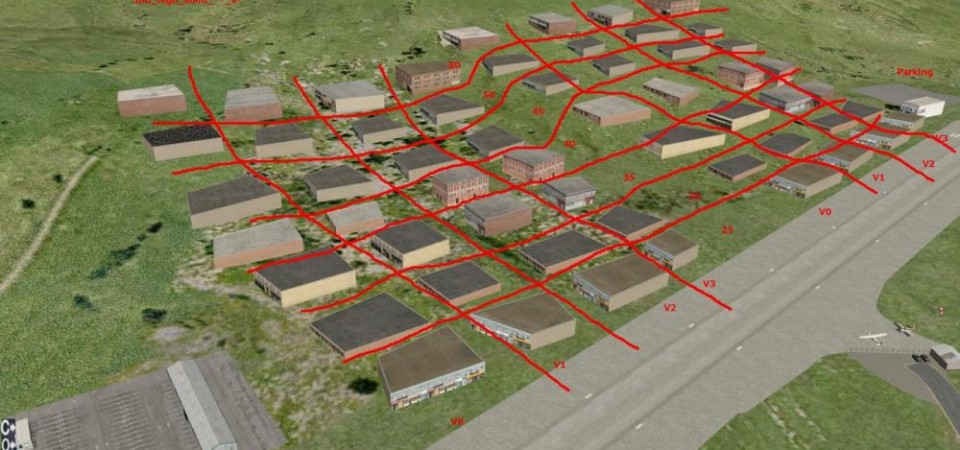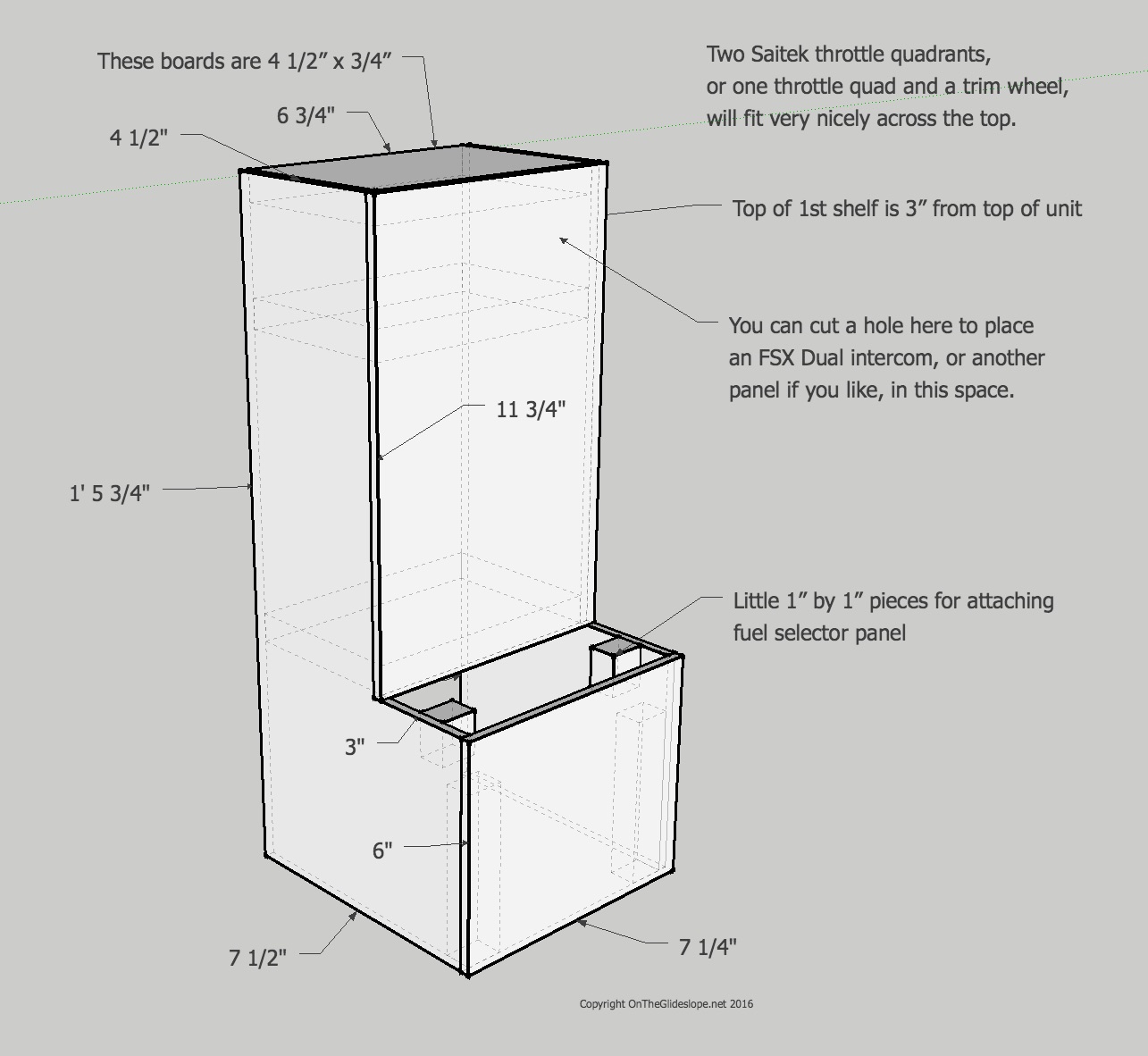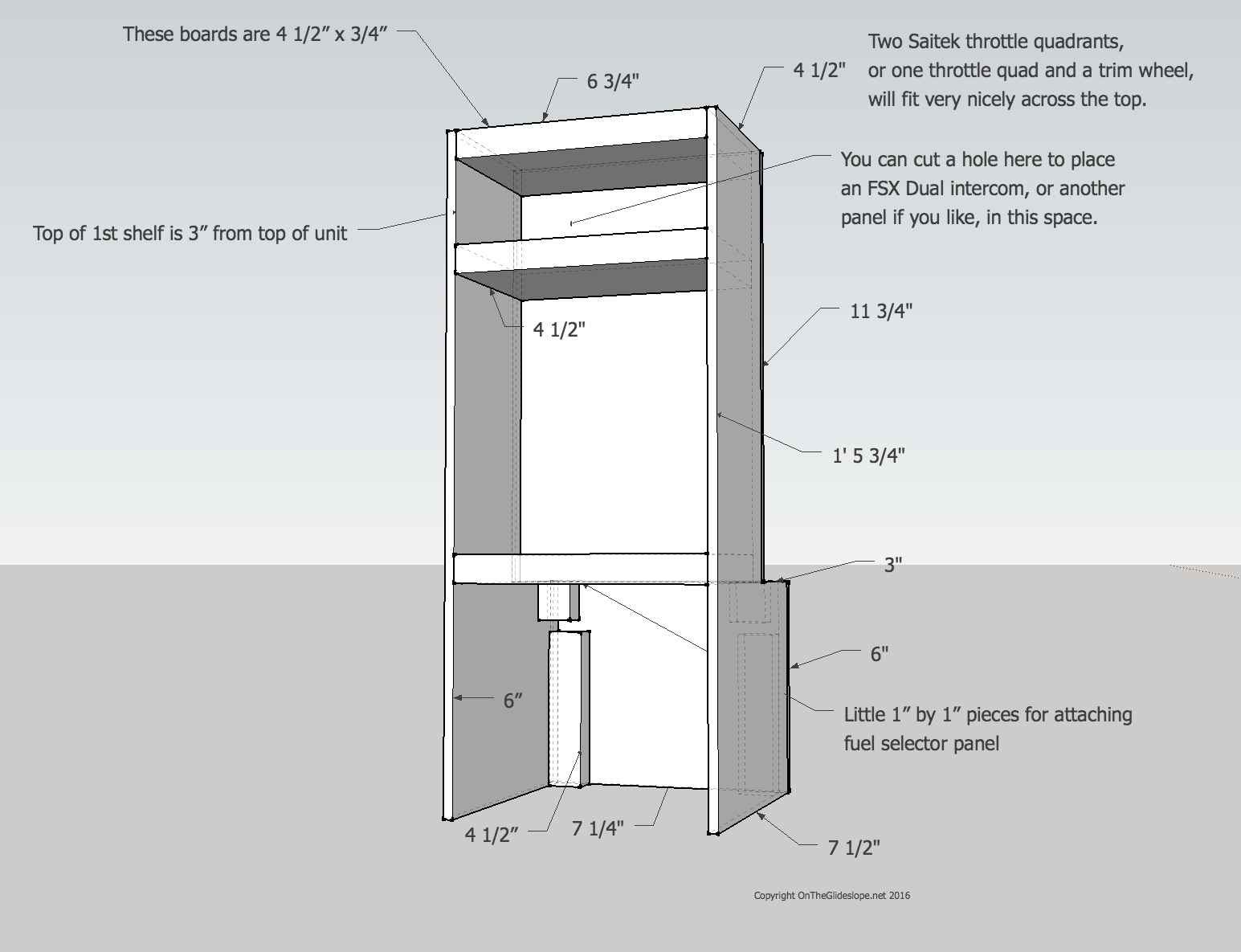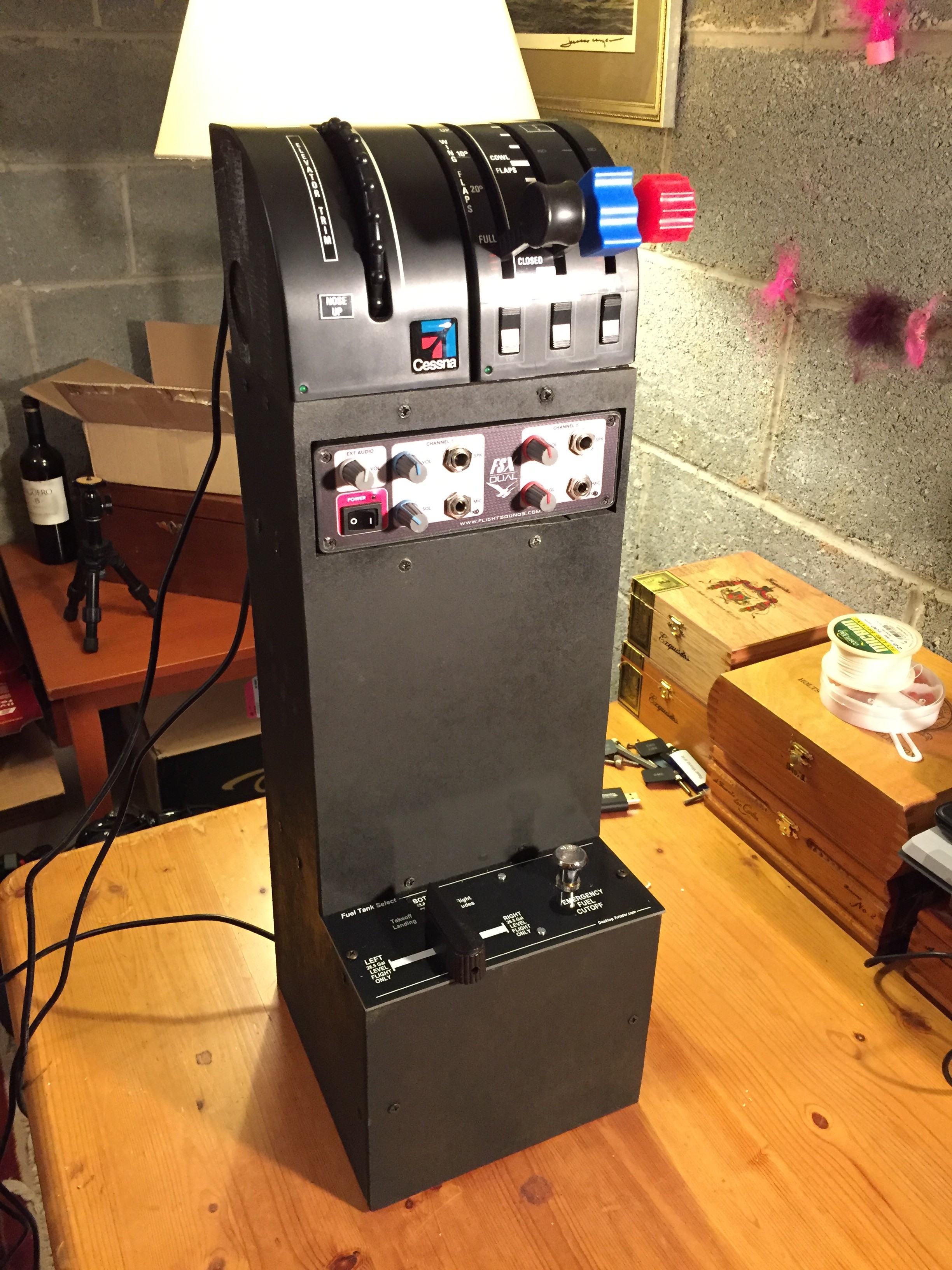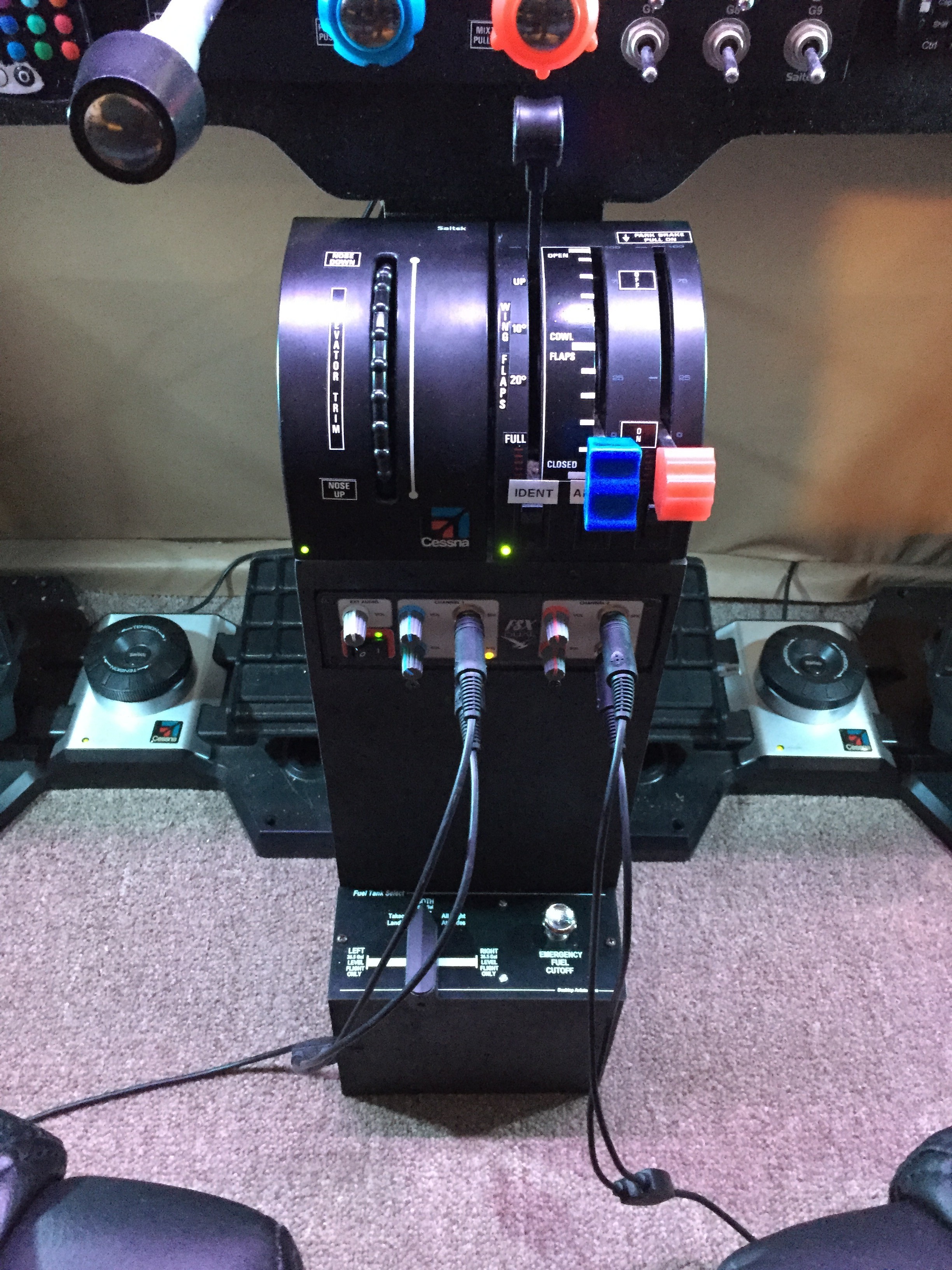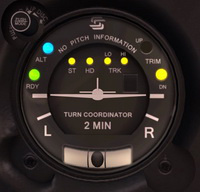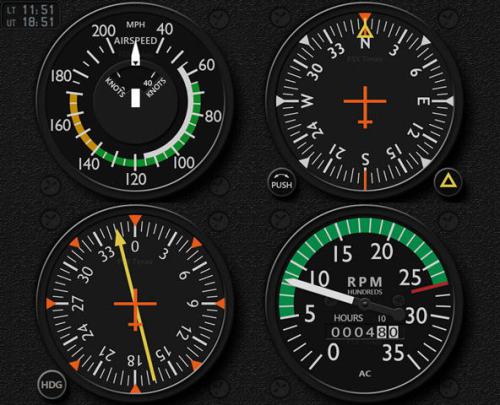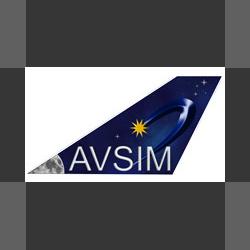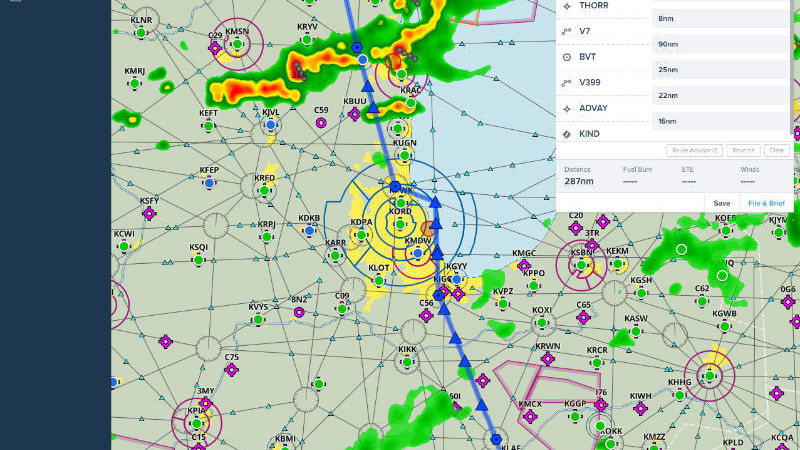Yesterday I committed the morning to testing graphics settings in X-Plane 11.5beta6 with three objectives: (1) understanding the performance difference Vulkan gives me over OpenGL, (2) understanding the performance implications of the various graphics settings under Vulkan on my setup, and (3) finding my optimal Vulkan graphics settings under the current beta.
As a reminder, my setup is an Intel i7-6700K 4.0 overclocked to about 4.6, liquid cooled, with 64G RAM and an EVGA GTX 1080ti Black Edition GPU with 11G VRAM. The GPU is running three screens in X-Plane, and four overall, with the motherboard GPU running a fifth screen. Full details are here. All testing was done sitting on the ramp at KVNY in the Jason Chandler SR20 I use in the sim, with Ortho scenery and no plugins. My testing setup was to compare settings in clear skies and in scattered clouds so I could understand their impact. I had a number of crashes along the way — it’s a beta, so this isn’t unexpected.
Overall it was a very interesting morning. Here’s what I learned.
First, regarding OpenGL vs Vulkan, my prior Vulkan settings (HDR, 4xSSAA+FXAA, shadows on, high objects, reflections on first notch, draw aircraft) were producing about 25 FPS on the ramp at KVNY. These same settings in OpenGL produced 13 FPS, and then quickly crashed the sim. So call it a nearly 100% increase in performance, and a big increase in stability. That’s all the OpenGL testing I wanted or needed to do.
Moving on to the testing of Vulkan settings, I reloaded the sim with all graphics settings full-left to establish a baseline performance level. Full-left settings gave me 89 FPS clear skies, 70 FPS scattered clouds. This 20-frame hit from clouds under full-left settings was the largest cloud hit I had in testing, interestingly. With the baseline established, I began adjusting one setting at a time to see its impact on frames. Here’s what I found:
- Visual Effects: Full left 89 FPS, Med 88 FPS, HDR 80 FPS, Max 80 FPS. (I forgot to test clouds here, but more on that later). Conclusion here is that medium is as good as full-left , and moving to HDR costs about 10 FPS. One would think that max right has no impact from this, but with clouds and objects in a later test we will see this isn’t the case.
- Texture Quality: Full left 88 FPS, Max 87 FPS. At max it loaded about 4,100 MB of data, and with my GPU it had no real effect on performance. Others with less VRAM will have other results. Interestingly, when switching other settings (like anti-aliasing or visual effects) the sim would reload textures. There would be a brief frame hit while it did so, but once they were loaded frames would return to prior levels. Conclusion (for my card): Max out the texture quality.
- Antialiasing w/o HDR: Full left 88 FPS clear, 60 FPS scattered. 4x 88 FPS clear, 60 scattered, 8x 80 FPS clear, 55 scattered. Conclusion: 8x costs about 10 frames, and while one would expect a 20-30 FPS hit for clouds on 4x or 8x, later with objects loaded we find this is not the case.
- Antialiasing w/HDR: I only tested 4xAA and up here, as I really don’t like the visuals without it. 4xSSAA 78 clear, 55 scattered. 4xSSAA+FXAA 75 clear, 55 scattered. 8xSSAA+FXAA 53 clear, 50 scattered. Conclusion: with HDR 8x costs about 20 frames, but does not hurt cloud performance.
- Antialiasing w/Max Visual Effects: 1xAA 80 clear, 65 scattered. FXAA 80 clear, 65 scattered. 2xSSAA+FXAA 73 clear, 65 scattered. 4xSSAA 42 clear, 34 scattered. Given that large drop, skipped 4xSSAA+FXAA and went to 8xSSAA+FXAA 16 clear, 14 scattered. Conclusion: Max visual effects has a huge hit at 4x AA and up. Avoid as I can’t run 4x AA at reasonable frames (remember I have no objects loaded or shadows in these tests).
Those are the settings that are GPU-limited. I then turned to the CPU-limited settings (and my system is definitely CPU-limited, given the age of the i7-6700K):
- Shadows: Visual effects and AA full left, no objects, 80 FPS shadows off, 70 FPS shadows on. Max objects: 30 FPS shadows off, 15 FPS shadows on. Conclusion: Shadows have a minimum 10 FPS hit in Vulkan, at least for me.
- Objects: Full left 80 FPS. Low, 60 FPS. Med 45 FPS. High 35 FPS. Max 30 FPS. Conclusion: Deciding to have any objects at all gives the biggest frame hit for me, at 20-25 FPS. After that each increase in objects appears to hit my CPU for a lower number of FPS (15, then 10, then only five from High to Max).
- Reflections: On my rig I only get an FPS hit when reflections are set to the third setting or higher, and that hit is significant (10 or more frames). Conclusion: Might as well use them on the second notch, but never more.
- Parked Aircraft: Did not test as I know they have a negligible effect on my system.
With this testing done I went into final trials of what could be optimized settings for my rig, at least in this Vulkan beta.
- Option 1 high objects no shadows: Visual effects medium, textures max, AA 8x, shadows off, objects high, reflections low, parked aircraft: 47 FPS clear, 44 FPS scattered. (Note that with these settings clouds have a minimal hit on frames.)
- Option 2 high objects with shadows: Visual effects medium , textures max, AA 8x, shadows on, objects high, reflections low, parked aircraft: 39 FPS clear, 27 FPS scattered. Note the big FPS hit from shadows, and that they made the clouds impact higher as well.
- Option 3 max objects no shadows: Visual effects medium, textures max, AA8x, shadows off, objects max, reflections low, parked aircraft: 30 FPS clear, 27 FPS scattered.
- Option 4 HDR high objects no shadows: Visual effects HDR, textures max, AA2x, shadows off, objects high, reflections low, parked aircraft: ~40 FPS clear, ~30 FPS scattered.
My primary conclusions from all this testing are that:
- For me, shadows are not worth the performance hit, even with Vulkan.
- I can run at 8xAA if in medium visual effects.
- HDR is not worth the price of performance it has at higher AA settings, and I will use it only at night when I can turn down the AA and not see the jagged effects.
- I can run at high to max objects if the above are true, and depending on the density of the objects.
Based on these tests I’ve settled on two visual setups, primarily because I find HDR necessary if I’m to enjoy X-Plane lighting at night:
- Daytime: Medium visual effects, 8xAA, shadows off, objects high, reflections low, parked aircraft
- Nighttime: HDR visual effects, 2xAA, shadows off, objects high, reflections low, parked aircraft
Given that going from high to max objects only costs me about five to 10 frames with these settings, if I’m not in a highly-populated area I may load with max objects, but these will be the defaults. From a plug-in standpoint, the only graphic plugin I will run on top of these is the FlyAgi Tweak Utility, which is my preferred visual-modification and frame-limiting plugin. I use it with the level of detail knocked down three clicks, which sets the LOD to about 82% (and which is where I like it).
So how do these settings work? To test them yesterday afternoon I did a PilotEdge flight from Palm Springs to San Diego using ortho scenery and the “Daytime” settings above. Visually it was the best flight I have had in four years with the home cockpit. I have a video of the flight below, and I also believe that visually it is the best video I’ve streamed to date (the 1080p60fps stream works very well, and the Vulkan performance is nearly devoid of stutters). Beginning on the ramp at Palm Springs I had 50 FPS. They dropped to about 35-40 during takeoff, climbed back up to 50 en-route, and were at 30 coming over San Diego and at landing. Weather was clear but I know from the testing that clouds would have cost me only about five frames. (Finally, if you watch the video, note that the audio was off for the first 4:20.)
Visual performance in flight simulators is very rig-specific. Your testing may vary widely from what I learned and have posted above. But it also might be helpful to you
, even if it you simply follow a similar process. Regardless, it’s clear that Vulkan is going to be a game-changer for X-Plane.